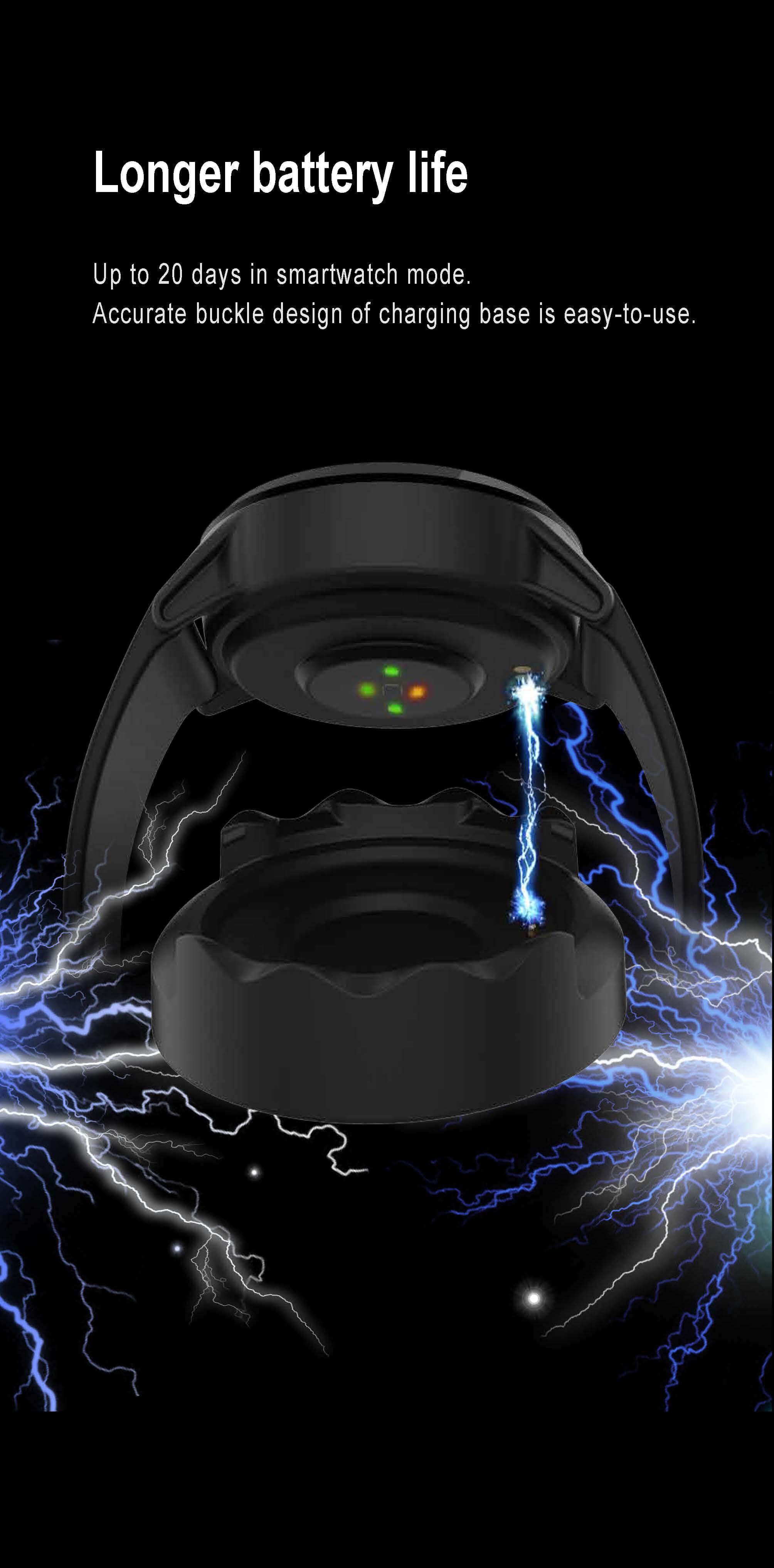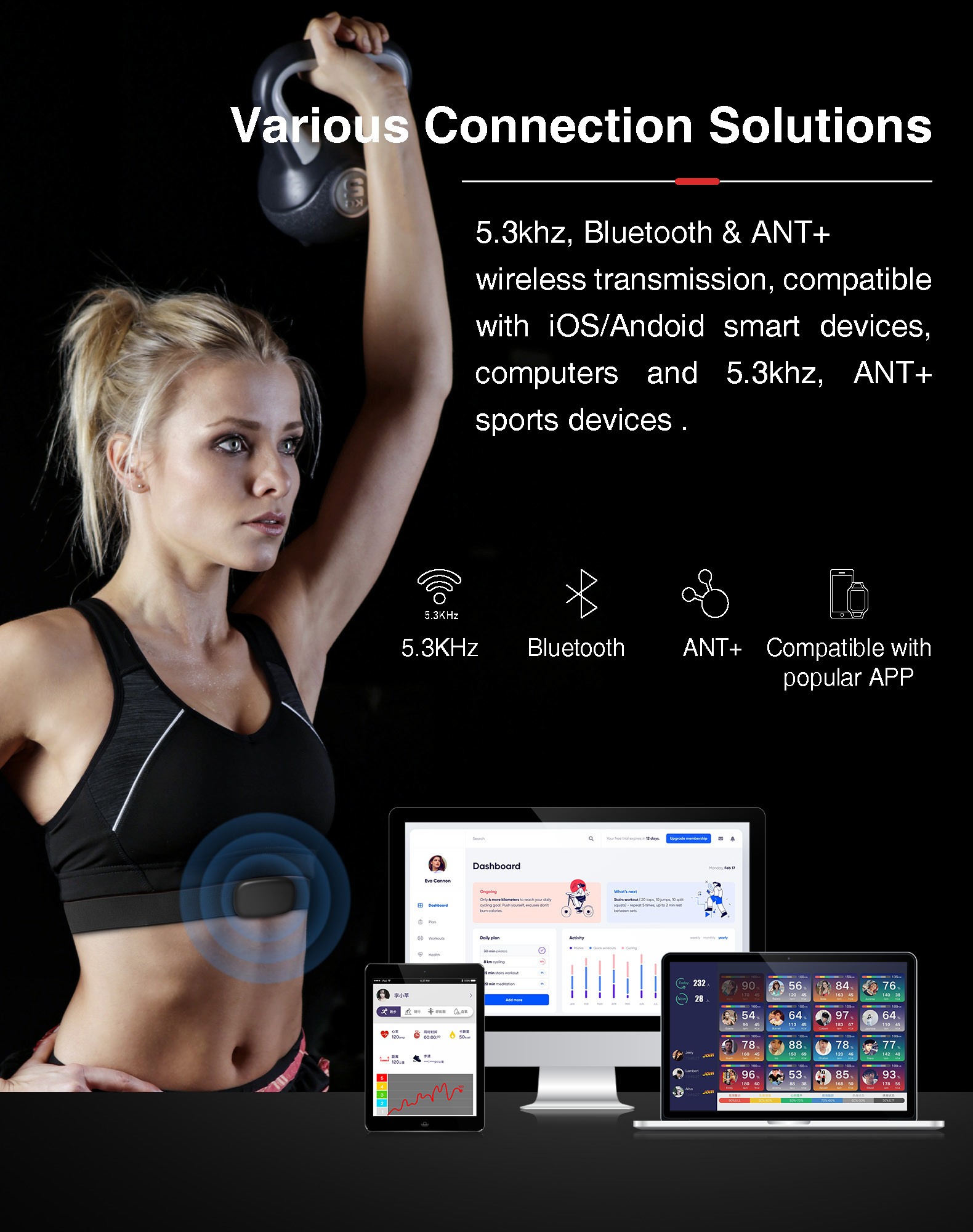To revisit this article, visit My Profile, then View saved stories.
To revisit this article, select My Account, then View saved stories GPS Smart Watch

If you buy something using links in our stories, we may earn a commission. This helps support our journalism. Learn more. Please also consider subscribing to WIRED
Those days of getting a heart rate reading only when you visit your physician are truly a thing of the past. You don’t even have to spend big money or leave your home to get a sense of your heart rate during exercise or at rest.
The rise of optical and EKG (electrocardiogram) sensors that can now reliably deliver that information from your wrist, chest, or arm means you can better understand how hard you hit it in that boot camp class and get a window into the most stressful periods of your day.
Updated December 2023: We've added the Coros and Viiiiva heart rate monitors, plus the Fitbit Charge 6 tracker.
For more sports and fitness guides, check out the Best Fitbits, Best Fitness Trackers and Watches, Best Running Gear, and the Best Wireless Earbuds for Working Out.
Special offer for Gear readers: Get a 1-year subscription to WIRED for $5 ($25 off). This includes unlimited access to WIRED.com and our print magazine (if you'd like). Subscriptions help fund the work we do every day.
Why would you want a heart rate monitor? What kind of information do you need to see, and when and how will you wear the device? Asking these questions will help you get a heart rate monitor that not only delivers wearability, accuracy, and value, but is right for your lifestyle and health needs.
Where on your body you want to wear a heart rate monitor is a pretty important factor. Wearing one on the wrist, as part of a smartwatch, may be the most convenient way to track heart rate, though a strap—typically on the chest or, more recently, the upper arm or bicep—can generate more accurate data for activities like exercise. If you want to track heart rate during sleep, make sure you opt for a form factor that isn’t going to feel bulky or become a nuisance for your sleeping companion. If you’re hoping to use it with other fitness equipment or a watch, look for the type of Bluetooth and ANT+ connectivity support to do that with single or multiple devices.
A chest strap remains the most accurate way to track your heart rate for exercise, putting an EKG sensor closest to your heart. The Polar H10 is the standout here. That’s because Polar has replaced the typical loop-and-hook connector found on most monitors with a buckle-style connector to reduce irritation. The company also uses small silicone dots to make sure the strap stays put during high-intensity activities so the HR data is still good.
Comfort aside, it’s the most accurate of the monitors I’ve tested for exercise. There were no glaring drop-outs or underreporting or overreporting during my test runs, indoor cycles, strength training, or interval sessions. Having some built-in memory to store data for a session is useful, and the ANT+ connectivity means you can effortlessly link equipment like turbo trainers or swap out the HR stats on your watch for more accurate ones. You can take it for a swim too, and you won’t have to replace the battery for a year, even if you’re wearing it on a regular basis.
If a chest strap is out of the question because you need to see your metrics in real time and glance at them during the day, the Forerunner 265 is a multisport watch that can deliver reliable heart rate metrics during workouts, and even when you head to bed.
The headline change from the previous 255 is the addition of a vibrant AMOLED touchscreen display inside a 42-mm or 46-mm case, which holds Garmin’s Elevate optical heart rate sensor. That delivers continuous heart rate data by the second and does so reliably. During runs and indoor workouts, the sensor holds up well at high intensity, with the support to pair to external heart rate monitors if want to go pro. That optical sensor also brings other useful measurements, like heart rate variability (HRV), which fuels useful features such as Training Readiness. This uses HRV, along with other metrics, to provide a clear sense of whether you should go hard or give your body a rest day.
4iiii is perhaps best known for its cycling power meters. With the Viiiiva chest strap, fans of two wheels and everyone else can get an accurate hit of heart rate data on a budget. The V100 uses an EKG sensor like other chest straps, with an IPX7-rated design that makes it strong enough to be submerged in water at up to 1-meter depth for 30 minutes, but you’ll still need to hand-wash it when it’s drenched in sweat.
It’s powered by a coin cell battery, giving you 160 hours of tracking time and storage to cover 65 hours of training. This affordable chest strap monitor offers typical chest strap-level accuracy, even for high intensity workouts. Along with offering Bluetooth and ANT+ connectivity to let you wirelessly pair it up with pretty much any device you could want, 4iiii offers an ANT+ bridge. That means it can also collect data from ANT+ sensors and devices like indoor trainers and send that information to your paired iPhone or Android phone. That makes it useful for Zwift fans particularly, to bridge the connectivity gap to the mainly Bluetooth-friendly virtual cycling platform.
Few monitors feel like they belong on the bodies of cyclists—but the Wahoo Tickr X is one of them. Especially if you spend more than your fair share of that bike time in the confines of your home.
The latest Tickr X, with its 50 hours of onboard storage, uses an EKG sensor. And it now integrates that sensor into a strap that’s slimmer than the one used in the last iteration. Wahoo uses LED light indicators that you can glance at during workouts to see clearly that it’s reading your heart rate and has successfully connected to another piece of smart indoor bike equipment over ANT+ or Bluetooth. That connectivity support means you can pair multiple devices at the same time, making it ideal to hook up to Zwift and Peloton—plus it plays nice with an Apple Watch. It also works with Wahoo’s own phone app to track cycling cadence, with additional advanced metrics when you swap biking for your running shoes.
People love the Apple Watch (8/10, WIRED Recommends) for its day-to-day smartwatch features, but it has also evolved into a fantastic health and fitness companion. A big part of that is down to the work Apple has done finessing its heart rate sensor technology, and that continues with the Series 8.
We’ll start with the fact that there are both EKG and optical sensors here. The former has the regulatory approval to detect signs of serious heart health issues, such as atrial fibrillation (AFib), and easily share heart rate data with medical professionals. On the fitness side, this is one of the best-performing smartwatches we’ve tested for high-intensity exercise, which is where so many other watches falter. It also performs more reliably than the larger Apple Watch Ultra (8/10, WIRED Recommends) on that front. Apple lets you pair up external heart rate monitors and gives you access to an extensive collection of sports and health apps that can harness those heart rate sensors to offer even more useful insights.
If you’ve already got a Garmin watch on your wrist or a Garmin bike computer mounted to your handlebar, the HRM-Pro Plus offers a seamless route to more accurate heart rate data so you can better gauge your fitness levels and recovery needs.
The EKG sensor didn’t falter at high intensity when I tested it out on runs, indoor HIIT bike sessions, or bodyweight workouts. It’s now much easier to remove the battery than with Garmin’s earlier chest strap, though you won’t need to think about that for at least a year. The ANT+ and Bluetooth support mean it works with apps and platforms like Zwift, and there were no flaky pairing issues with the latest Fenix, Forerunner, or AMOLED-packing Epix watches. Extra features include advanced running metrics, like vertical oscillation and ground contact time, to help you dig deeper into your form. And if you want to wear it for a game of soccer, it’ll double as an activity tracker to count steps and intensity minutes.
Heart rate monitoring armbands are the new kid in town here, and while the Coros Heart Rate isn’t the most feature-packed option to track your heart from further up your arm, it has the most likable design in terms of everyday comfort. You’re also much less likely to misplace the Coros compared to other armband monitors.
Coros pairs up a not-too-dainty, five-LED light-packing sensor with a velcro strap that has a welcome stretch to it due to a mix of polyester, nylon, and spandex. It’s just Bluetooth connectivity here, so no love for ANT+ fans, but this monitor can connect to sports watches, connected gym equipment, and indoor trainers, so don’t sweat it. We’ve found that on runs, indoor rides, and high-intensity workouts, this monitor was typically 1-3 BPM out from a heart rate monitor chest strap—so it’s up to you whether that’s a trade-off between practicality and accuracy that makes sense. It lacks the storage capacity you get with rival HR armbands like the Polar Verity Sense ($95) and Scosche Rhythm24 ($50), though it does have a useful notification light to let you know when you’ve maxed out on the 38 hours of battery it can muster up on a single charge.
While it’s tough to know where the future lies for Fitbit’s smartwatches, the Charge 6 (7/10, WIRED Recommends), its flagship fitness tracker, strengthens its monitoring powers, notably in the heart rate tracking department.
It relies on a similar optical sensor setup to the Charge 5, reliably delivering metrics like resting heart rate. It also dips into heart rate variability to estimate when you’re feeling stressed. In the exercise-tracking realm, that sensor performed better for workouts, with Fitbit delivering on that promised 60 percent improved accuracy compared to the Charge 5. That's across stationary sessions like indoor rows and HIIT sessions, and when putting the not-so-fantastic built-in GPS to outdoor use. However, it does still occasionally have its moments throwing up wildly high average and maximum readings. Now you can make the most of that (mostly) reliable tracking and transmit it to connected gym equipment like rowers and treadmills. An EKG sensor gives the Charge 6 the power to assess your heart rate rhythm for atrial fibrillation, bringing a health feature typically reserved for more expensive smartwatches to the much cheaper Charge 6.
End-of-Season Sale: Up to 46% off Dyson technology + bonus gifts + free shipping
GoPro Promo Code: save 15% on your next order
Samsung coupon Code for up to 40% Off the store
Redeem $1000 discount on iPhone 15 Pro and Pro Max - Best Buy coupon
15% off VistaPrint promo code when you sign up for emails

Smart Skipping Rope © 2023 Condé Nast. All rights reserved. Use of this site constitutes acceptance of our User Agreement and Privacy Policy and Cookie Statement and Your California Privacy Rights. WIRED may earn a portion of sales from products that are purchased through our site as part of our Affiliate Partnerships with retailers. The material on this site may not be reproduced, distributed, transmitted, cached or otherwise used, except with the prior written permission of Condé Nast. Ad Choices